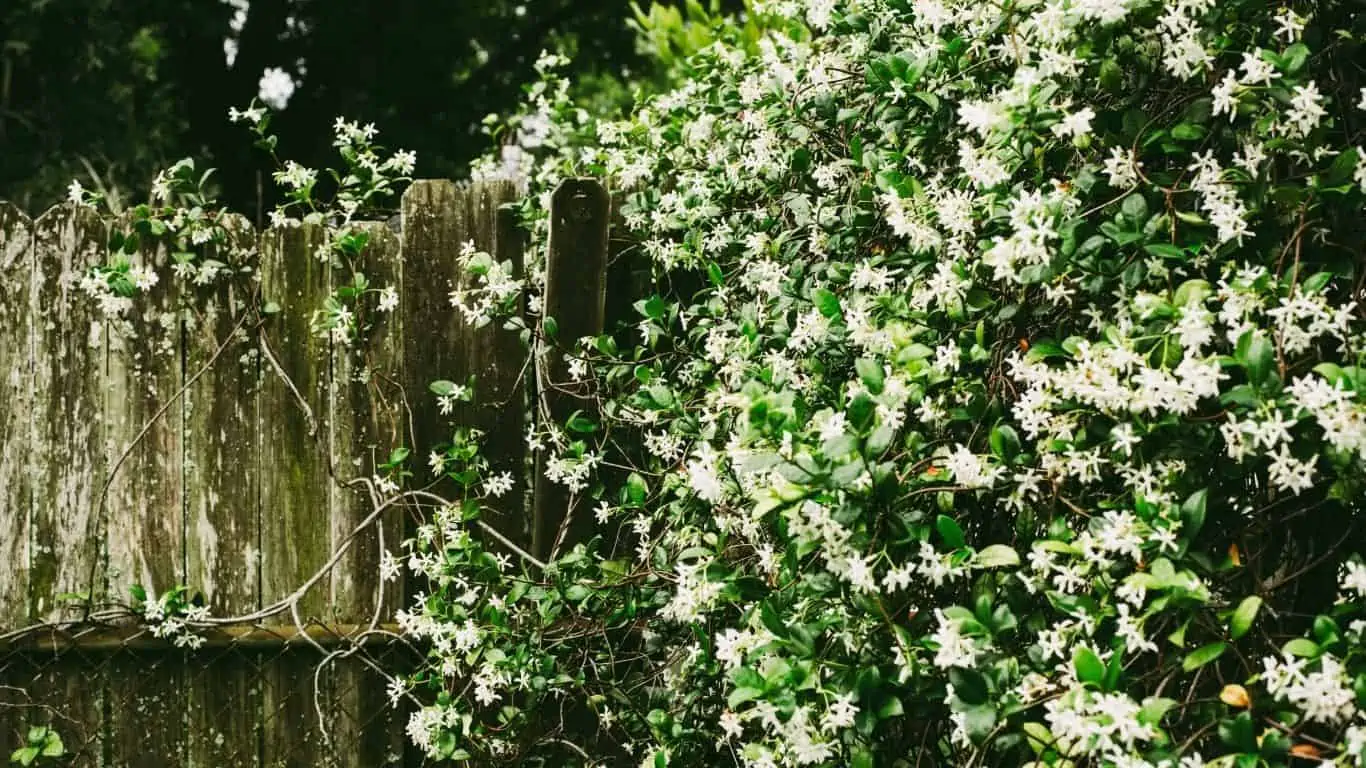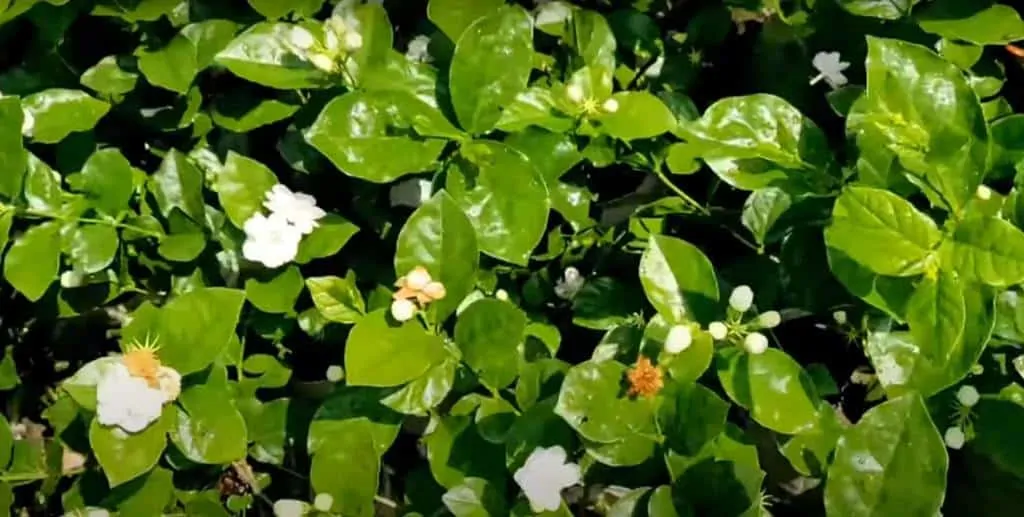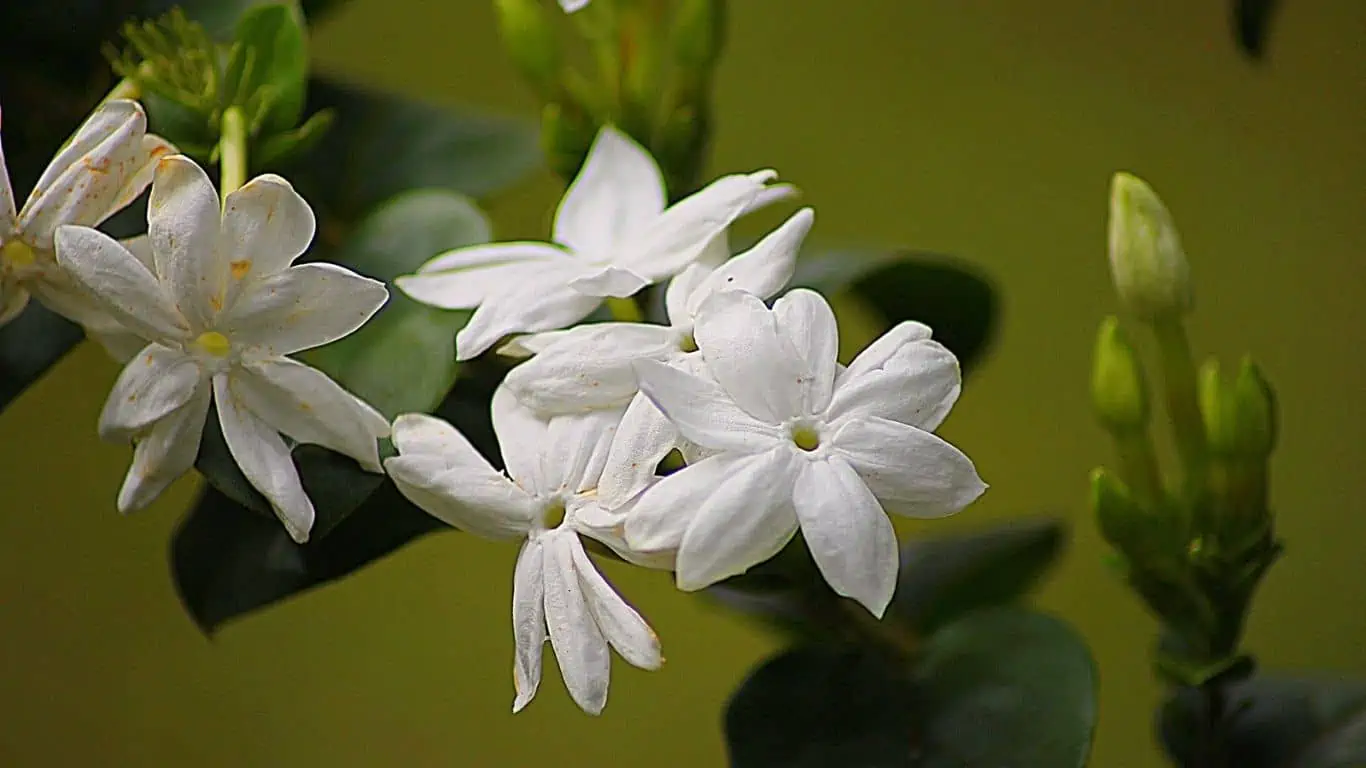Jasmine plants are not very prone to any serious pest or diseases. Although some bugs can damage your plant, especially during rainy days. Jasmine plants produce fragrant flowers. These flowers can attract many insects. Some of those are useful while others are not so worth for the plant. Bees and Butterflies are helpful for the plant. They help in pollination. On the other hand, aphids, whiteflies, and spider mites are harmful pests that can damage the jasmine plant. Today we will discuss How to Control Yellow Aphids on Jasmine? keep reading for details.

Check out my previous post: How to Choose a Jasmine Plant for Gardening?
What is Yellow Aphid?
Yellow Aphid is a tiny yellow semi-transparent bug. It is a common type of Aphid that affects the jasmine plant. It feeds on the plant sap. These bugs are small enough to hide beneath the jasmine leaves. They are just 1/8th of an inch in size.
These bugs are small yet very dangerous fr the jasmine plant. A single aphid or two may not damage the plant. Although each female yellow aphid can give birth to 80 or more babies. All of these can happen in just 6 days of their life. Together they can damage the jasmine plant. Imagine leaving these bugs unnoticed for a few weeks. They can easily damage the entire garden.
Therefore treat these nasty bugs as soon as you notice them.
Do Aphids eat Jasmine?
Technically Aphids can’t eat the Jasmine plant. These bugs can only suck the plant sap. They scrape the thin skin on the stem and suck the sap directly for veins or the phloem fiber.
Yellow aphids lay eggs on the lower side of the leaves. This is a good hiding spot for newborn aphids. They continue to feed and multiply on the plant until there is nothing left to feed. Sometimes sunlight and heat can also force them to leave the jasmine plant.
Aphids are sap-sucking insects. They need moist coll shady spot to live. That’s why they choose low-lying soft jasmine stem and leaves. They don’t eat the plant rather they drink the sap out of it.
How Aphids Damage a Jasmine Plant?
Yellow Aphids feed on the jasmine plant sap. Ignoring their spread and infestation can lead to the death of the plant.
The very nature of Aphids contributes to this situation. Their rate of reproduction is very high. A single female aphid can lay 80 eggs in a week. They can exponentially grow and infest the whole garden within a few weeks.
They suck up essential plant sap causing the leaves to curl and deform new buds and branches. This is not the only problem with aphids. These nasty bugs secrete honeydew that attracts other pests and the infamous black fungus. The Sooty mold or the flaky black fungus uses the honeydew as a breeding ground. It can spread to the entire plant.
Aphids can also spread plant viruses and this is a very serious problem. Viral infections are hard to detect and even harder to treat after detection. So get rid of aphids to keep your jasmine plants safe.
How do I get rid of Yellow Aphids on my jasmine?
Treating Aphid is not a big problem if you are aware of their infestation. Here Timing is more important than procedure. Always check your jasmine plants for any Aphid infestation. Carefully look under the leaves every day and if you see tiny bugs crawling then it’s time to act.
You can simply use a jet spray to get rid of these bugs in the early days of infestation. Keep in mind they are in search of food and shelter. If you let moisture settle around the leaves then they may like that. So don’t water on cloudy days and let the foliage dry before the next spell.
Sunlight can also help with the treatment of Aphids. Direct bright light is good for the delicate semi-transparent body of these bugs. They would prefer to move on to some dark and cold place. Therefore you should grow Jasmine in the full sun especially to avoid aphids and also to get more blooms in the season.
If none of these precautions are helpful then you can choose any organic or chemical methods to treat Aphids. They are very helpful although chemical pesticides should be your last option.
Read this: How to get Maximum Bloom in Jasmine Plants?
Organic Method for treating Yellow Aphids
There are quite a few organic methods that can work for Aphids control. None of them will kill the bugs instead they distract them away from the jasmine plant. So it is a more eco-friendly technique of pest control.
You can Use-
- Neem Oil Spray
- Garlic Spray
- Pepper Spray
- Soap water solution
- Organic Azardactin spray
These are a few easily available items that can help us in the treatment of Aphids. Neem oil is my first choice. It is the best organic pest control method. Azardactin spray is just concentrated neem oil extract specially derived for pest control.
Garlic and pepper spray can distract these bugs with a strong fragrance. You can crush a few garlic and mix it well with water. Do the same with pepper. They are helpful in the early treatment of aphid infestation.
The final option is a soap water solution. It is not just soap water but the oil in it that works for Aphid treatment. You can prepare this with 1 spoon of liquid dish wash soap and 2 spoons of edible oil. Mix them well in 1-liter water and spray on the infested jasmine plant. This spray is 100% effective with aphids. The soap water dampens their wing and the oil stick them to the stem. Once the water drys out they die due to dehydration. This solution also works on the aphid eggs.
I prefer soap water spray with neem oil spray for better pest control in my garden. It is cost-effective and very helpful in the garden.

Check out: How to Grow Asiatic Jasmine: Trachelospermum asiaticum
Common Pesticides for Yellow Aphid Treatment
I don’t like chemical pesticides. They can treat pest attacks although they are harmful to us and our family. Still, you may have to use them in times when no organic pest control is helpful. Sometimes the situation becomes so worse that you can’t rely on organic methods of pest control.
You can use Pesticides and Insecticides with the following compounds –
- Imidacloprid
- Emamectin Benzoate
- Fipronil
- Thiamethoxam
- Chloropyriphos
- Pymetrozine
These chemical compounds are available in different names with different brands. So check out a few of These chemical pesticides on Amazon. Always use chemical pesticides with proper care. They are toxic so use garden gloves and avoid direct contact with the skin. You must read the description to use before opening the packets.
Other useful techniques to treat Yellow Aphid in Jasmine Garden
Sometimes sticky bug traps can also help in aphid control. Although they can’t eradicate the entire problem yet it may inform you of early infestation. Use them as a precautionary measure.
Chance watering time to early in the morning instead of the evening. Sunlight and daytime temperature will dry up extra moisture and keep the stem and foliage free from pests. Late watering is a common reason for aphid infestation in flower gardens.
Remove infected branches and keep the jasmine plant short and tidy to avoid pest attacks. Allow vines to grow as much as you can easily handle. Excessive growth can also increase pest attacks.
Altogether jasmine plants are not very prone to yellow Aphids. They can handle them very well unless we do something stupid to worsen the situation. You must not overwater the plants and fertilize the soil only when required. Also Avid excessive growth and keep the plant tidy to control Aphids before they can become a problem in the garden.
What is your favorite method to Control Aphids on Jasmine? Write down in comments and keep gardening.

